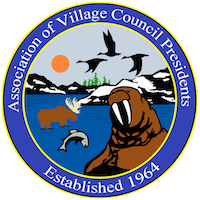Good morning. My name is Vivian Korthuis, and I serve as the Chief Executive Officer for the Association of Village Council Presidents (AVCP). AVCP is the regional non-profit tribal consortium serving 56 federally recognized Tribes located in 48 villages along the Yukon River, Kuskokwim River and Bering Sea Coast in Western Alaska. We live in the Arctic. Our region has approximately 30,000 people who are primarily Yup’ik, Cup’ik or Athabascan.
I would like to thank the Alaska Federation of Natives (AFN) for inviting me to be part of this panel for AFN Alaska Day 2023. Today, I’m going to focus my comments on the Challenges at the Northernmost Border and try to describe “What Success Looks Like” at the end of my comments.
This morning, Representative Mary Peltola spoke of how important it is to acknowledge the power of the human mind. Her comments reflect Yup’ik teachings and what the late Dr. Paul John used to tell us all the time: “move forward with one mind.” “Moving with one mind” means that we have a clear vision or picture of ourselves as people and where we are going on our path forward.
This is a powerful tool because what it means is that people are united. To move as one people is not an easy thing to do. That sense of urgency around Arctic issues is clear as we have heard from this morning’s presenters, especially from our Congressional Delegation and military officials.
To read the full testimony, click here.
###
For additional information, please contact AVCP Communications Director, Gage Hoffman at 907-543-7308 or email at ghoffman@avcp.org
AVCP is a regional nonprofit tribal consortium comprised of the 56 federally recognized tribes of the YK Delta. The geographic boundaries of AVCP extend from the Yukon River Village of Russian Mission downstream to the Bering Sea coast, north up through Kotlik and south along the coastline to Platinum and then extending up the Kuskokwim River to Stony River, including Lime Village on the Stony River tributary. The area encompasses approximately 6.5 million acres, or 55,000 square miles, in Western Alaska.






